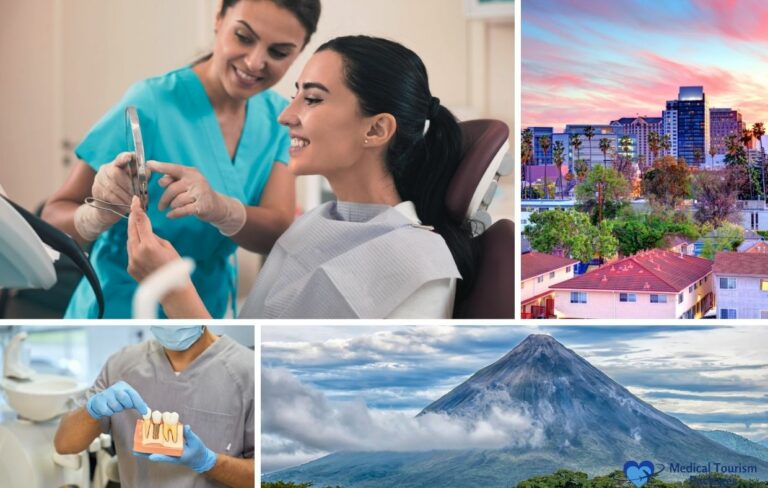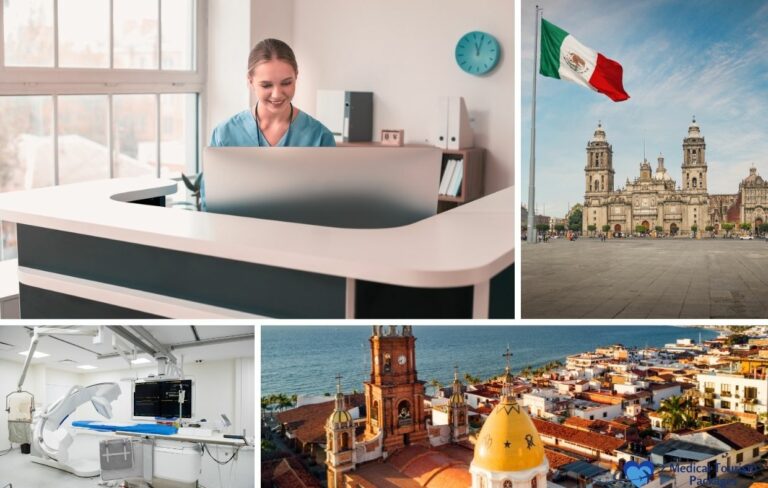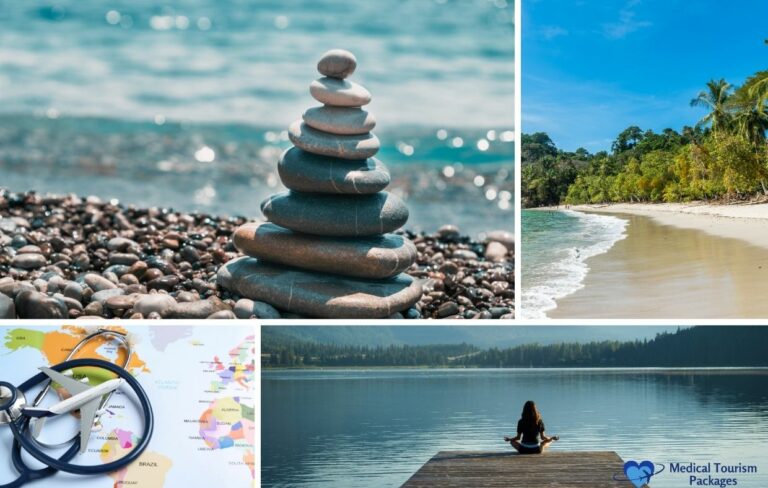Book Appointment Now
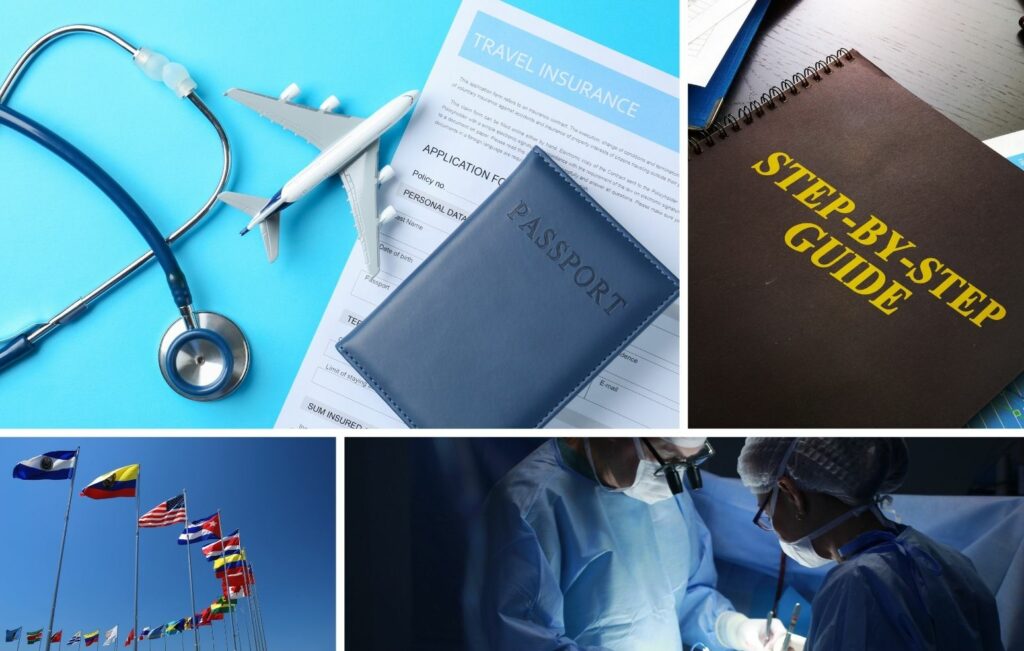
How to Plan Your Medical Trip to Latin America: A Step-by-Step Guide
Latin America has become a hot spot for people seeking medical treatments outside their home countries. People go there for cheaper procedures, specialized care, and good medical facilities in certain areas. But planning a medical trip isn’t like planning a vacation. You have to figure out foreign healthcare systems, pick the right doctors, and handle complicated logistics while you might not feel your best. That’s why careful step-by-step planning is essential, not just recommended, to stay safe, get good results, and feel less stressed throughout the process. This guide will walk you through planning a medical trip to Latin America, from early research to post-treatment considerations.
Choosing the Right Treatment and Country
First, you need to think about what medical procedure you want and which Latin American country would be best for it. This means understanding what treatments are available and what different countries are known for.
Medical Tourism Treatments in Latin America
Medical tourists go to Latin America for many different procedures. Understanding the popular ones helps with decision-making. Cosmetic and plastic surgeries like nose jobs, breast implants, liposuction, and facelifts are common, mostly because of skilled surgeons and much lower prices than in North America or Europe. Dental work is another big draw, from implants and veneers to complete mouth restorations, mainly because of big cost savings. Weight loss surgery, joint replacements, fertility treatments, and eye surgeries also bring many medical travelers to the region. Some places might offer special treatments or shorter wait times for complex surgeries. Knowing what counts as “medical tourism” helps potential patients sort through their options.
Mapping Treatments to Prominent Countries
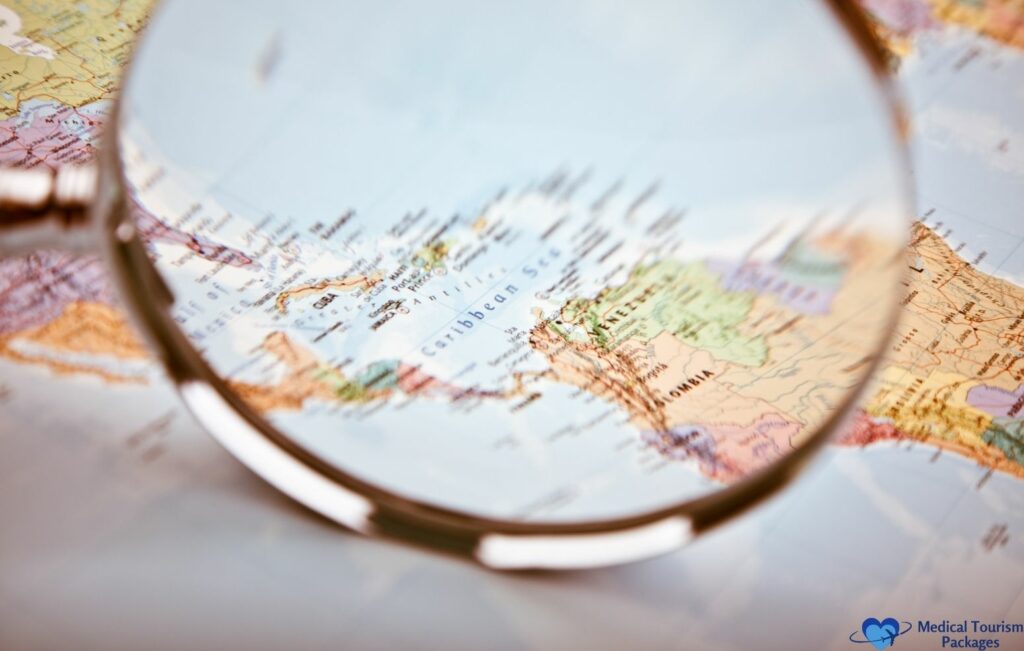
While you can find good care in many places, certain Latin American countries are known for specific medical specialties. Colombia and Brazil, for instance, are famous for cosmetic and plastic surgery, with lots of internationally trained surgeons and modern facilities. Costa Rica and Mexico are popular for dental work, offering affordable, high-quality care close to the United States. Panama uses the US dollar and has well-regarded medical facilities, making it attractive for many procedures. Other countries might excel in orthopedics, heart surgery, or other specific fields. These reputations come from government investment in healthcare, specialized training programs, or a long history of expertise in certain areas. But don’t make assumptions based just on a country’s reputation. Even if a country is known for good healthcare, you still need to research specific providers and facilities carefully. Focus on finding countries known for excellence in the procedure you need.
Initial Decision Factors: Beyond Cost
While saving money often drives medical tourism, choosing based only on price or country reputation is risky and insufficient. You must consider several other critical factors early on. Language barriers can make it hard to talk with medical staff and get around; check whether providers and support staff speak English in potential destinations. Cultural differences might affect your experience and expectations about care. Travel time and flight availability and cost from your home country matter too. The general safety and political stability of the destination country need careful research using reliable sources. You should also make an initial estimate of the total cost, not just the medical procedure but also flights, hotels, local transport, meals, and emergency funds, for realistic budgeting. And don’t forget to check visa requirements for your nationality early on, as these vary widely and might affect your planning timeline. Looking at these broader factors ensures a more realistic assessment of potential destinations.
Vetting Medical Providers
Picking the right doctor, surgeon, and medical facility is probably the most important step in your medical tourism journey. The quality of care directly affects your health outcomes, and choosing an unqualified provider or substandard facility can lead to bad results, complications, serious health risks, and limited legal options if something goes wrong. So thorough background checks and vetting are absolutely necessary to protect your health and well-being.
The Critical Importance of Due Diligence
Healthcare standards, regulations, and oversight vary across different countries, so you can’t assume quality based on your home country’s experiences. As a medical traveler, you have more responsibility to verify your chosen providers’ credentials and quality. This process takes time, effort, and a critical approach. Think of this vetting process not as an optional check but as an absolute requirement for a safe medical journey. The peace of mind from knowing you’ve chosen a qualified professional and a reputable facility is worth the effort.
Verifying Doctor and Surgeon Credentials
Checking the qualifications of the specific medical professionals is vital. Look at:
- Medical Board Certification: Is the doctor certified by the relevant specialty board in the destination country? Remember that certification processes and requirements differ by nation.
- Society Memberships: Does the doctor belong to national or international professional societies (like the national society of plastic surgeons or orthopedic surgeons)? This can show adherence to certain professional standards and ongoing education.
- Education and Training: Where did the doctor go to medical school? Where did they do their residency and any fellowship training? Pay attention to the institutions and specializations.
- Experience: How many years has the doctor been practicing? More importantly, how much experience do they have with your specific procedure? Ask about complication rates and patient satisfaction scores if available.
You can usually find this information on clinic or hospital websites, professional networking platforms, or by directly asking the provider’s office. It’s completely appropriate to ask direct questions like: “Where did you complete your specialty training?”, “How many of these procedures do you perform each year?”, “Are you board-certified in [Country]?”
Understanding Clinic/Hospital Accreditations
Beyond the individual doctor, the quality and safety standards of the clinic or hospital where you’ll have the procedure are vital. International accreditation serves as a good indicator of a facility’s commitment to high standards. Organizations like Joint Commission International (JCI) or Accreditation Canada International (ACI) do rigorous evaluations of hospitals based on criteria related to patient safety, quality of care, facility management, and ethical practices. Achieving such accreditation shows that a facility meets globally recognized benchmarks. Also look for relevant national or local accreditations and certifications. While accreditation is a strong positive sign, remember that it assesses the facility overall; it doesn’t replace the need to check the individual credentials of the specific surgeon or physician who will be responsible for your care.
Patient Reviews and Testimonials
Patient reviews and testimonials can offer valuable perspectives on others’ experiences. But approach them with skepticism. Look for reviews on independent third-party websites, forums dedicated to medical travel, or patient communities, as reviews on a clinic’s own website may be cherry-picked. Look for detailed accounts that describe the entire experience, consultation, procedure, communication, aftercare, facility conditions, rather than just simple star ratings. Before-and-after photos can be helpful for certain procedures but view them critically, considering factors like lighting, angles, and the time between photos. Pay attention to patterns: Do complaints or praises show up consistently across multiple reviews? While anecdotal, these firsthand accounts can complement formal credential checks and provide insights into the patient experience.
The Importance of Consultations
A direct consultation with the potential surgeon or physician, typically done virtually via video call, is crucial before making any commitments or travel arrangements. This interaction serves multiple purposes. It lets you discuss your medical history, treatment goals, and specific concerns directly with the provider. The provider should explain the proposed treatment plan in detail, including the techniques involved, potential risks and benefits, expected outcomes, and the anticipated recovery process. It’s also a chance to clarify all costs associated with the procedure and aftercare. Just as important is assessing the communication dynamic: Does the provider listen carefully? Are explanations clear and understandable? Do you feel comfortable and confident in the provider’s care? Preparing a list of questions in advance helps ensure all critical points are covered. Sample questions include asking about contingency plans for complications, post-operative support, and communication protocols.
Considering Facilitators or Agents
Some travelers choose to work with medical tourism facilitators or agents. These intermediaries can help with various aspects of planning, such as identifying potential providers, scheduling consultations, arranging travel logistics, and providing local support. While potentially helpful, it’s essential to vet the facilitator or agent as thoroughly as the medical provider. Investigate the facilitator’s reputation, experience, transparency about fees, and relationships with clinics (making sure they’re recommending providers based on quality, not just commission). In specific markets, such as Colombia, travelers might find specialized agencies who have deep local knowledge. Ultimately, you retain responsibility for the final decisions about your healthcare.
Flights, Accommodations & Logistics
Once you’ve tentatively selected a provider and destination, it’s time to focus on the details of travel and stay. Smooth logistical planning is critical, as disruptions or discomfort related to travel and accommodation can add unnecessary stress and potentially harm your recovery. Medical travel requires more detailed planning than a typical vacation.
Booking Flights: Timing and Considerations
Book flights well in advance to get better fares and availability, but only after you’ve confirmed and finalized treatment dates with the medical provider. Trying to book flights before confirming procedure dates risks costly changes or cancellations. When possible, choose direct flights to minimize travel fatigue and the hassle of connections, which can be particularly challenging after a medical procedure. Build some flexibility into your travel dates, or choose tickets that allow for changes (even if they cost more), to accommodate any unforeseen medical delays or adjustments to the treatment schedule. Also check airline baggage allowances carefully, especially if you’ll need extra luggage for recovery aids or comfortable clothing.
Visa Requirements and Entry Formalities
Understanding and fulfilling entry requirements for the destination country is a critical early step. Visa regulations vary significantly depending on your nationality and the specific Latin American country you plan to visit. Some nationalities may enjoy visa-free entry for short stays, while others might need to apply for a tourist or specific medical visa well in advance. The most accurate and up-to-date information comes from the embassy or consulate of the destination country located in your home country. Make sure to check passport validity requirements; many countries require passports to be valid for at least six months beyond your intended stay. Overlooking visa requirements can lead to denial of entry and completely derail your medical trip.
Arranging Local Transportation
Getting around in an unfamiliar city, especially when you might be feeling unwell or have limited mobility after a procedure, requires advance planning. Arranging airport transfers before arrival is highly recommended. Options include:
- Clinic/Hotel Transfers: Many clinics or recovery-focused hotels offer dedicated airport transfer services.
- Pre-booked Medical Transport: Services specializing in non-emergency medical transport might be available, offering vehicles equipped for accessibility.
- Reputable Taxi/Ride-Share Services: Research the availability, reliability, and safety of local taxi companies or ride-sharing apps (like Uber or local equivalents) in the destination city. Pre-booking or understanding how to use these services upon arrival is advisable.
Also confirm transportation arrangements for travel between your accommodation and the clinic for appointments and the procedure itself.
Choosing Recovery-Friendly Accommodation
Standard tourist hotels may lack the necessary amenities and support for a comfortable post-operative recovery. Selecting accommodation specifically suited for this period is vital. Key features to look for include:
- Accessibility: Ramps, elevators, walk-in showers, grab bars, and rooms with enough space for easy movement are important, especially after surgeries affecting mobility.
- Proximity to Clinic: Staying close to the medical facility simplifies follow-up visits and provides easier access in case of concerns.
- Support Services: Availability of reliable room service, proximity to pharmacies or grocery delivery services, and potentially on-site nursing assistance or partnerships with local home healthcare agencies can significantly ease the recovery burden.
- Comfort and Quiet: A calm, comfortable environment conducive to rest is essential.
Some destinations have specialized “recovery hotels” or suites specifically designed for medical tourists, offering tailored services. Exploring options for recovery hotels that meet these criteria should be a priority. A map of recommended clinics + recovery hotels can be extremely helpful in visualizing suitable locations that are conveniently situated relative to chosen medical facilities.
Planning Timeline
Coordinating medical consultations, provider selection, travel bookings, and personal preparations is complicated and requires a structured approach. Following a timeline helps manage the process effectively and reduces the risk of overlooking critical tasks. While individual circumstances vary, a general timeline provides a useful framework.
| Timeframe | Key Tasks |
| 3+ Months Out | Initial research on procedures & potential countries. Identify potential providers/clinics. Begin preliminary vetting (credentials, reviews). |
| 2-3 Months Out | Conduct virtual consultations with shortlisted providers. Select final provider & clinic. Confirm treatment plan & dates. Check visa needs. |
| 1-2 Months Out | Book flights & recovery-friendly accommodation. Apply for visa (if required). Arrange financing & confirm payment methods with clinic. |
| 1 Month Out | Arrange local transportation (airport transfers, clinic visits). Consult home doctor re: travel fitness & follow-up. Obtain medical records. |
| 2 Weeks Out | Confirm pre-operative instructions with foreign provider. Purchase travel insurance (confirming medical coverage). Plan communication methods. |
| 1 Week Out | Inform bank/credit cards of travel. Pack clothing, medications, documents. Prepare digital/physical copies of important papers. Reconfirm all appointments & bookings. |
| Departure Day | Carry essential documents, medications, and comfort items in hand luggage. |
This timeline shows that planning is a phased process requiring several months of lead time. A sample travel itinerary with treatment blocks can further help visualize how treatment days, recovery periods, and travel fit together.
What to Bring and How to Prepare
The final stage before departure involves careful preparation – gathering necessary documents, packing appropriately for both travel and recovery, addressing pre-travel health needs, and finalizing financial and communication arrangements. Thorough preparation minimizes potential problems upon arrival and during your stay.
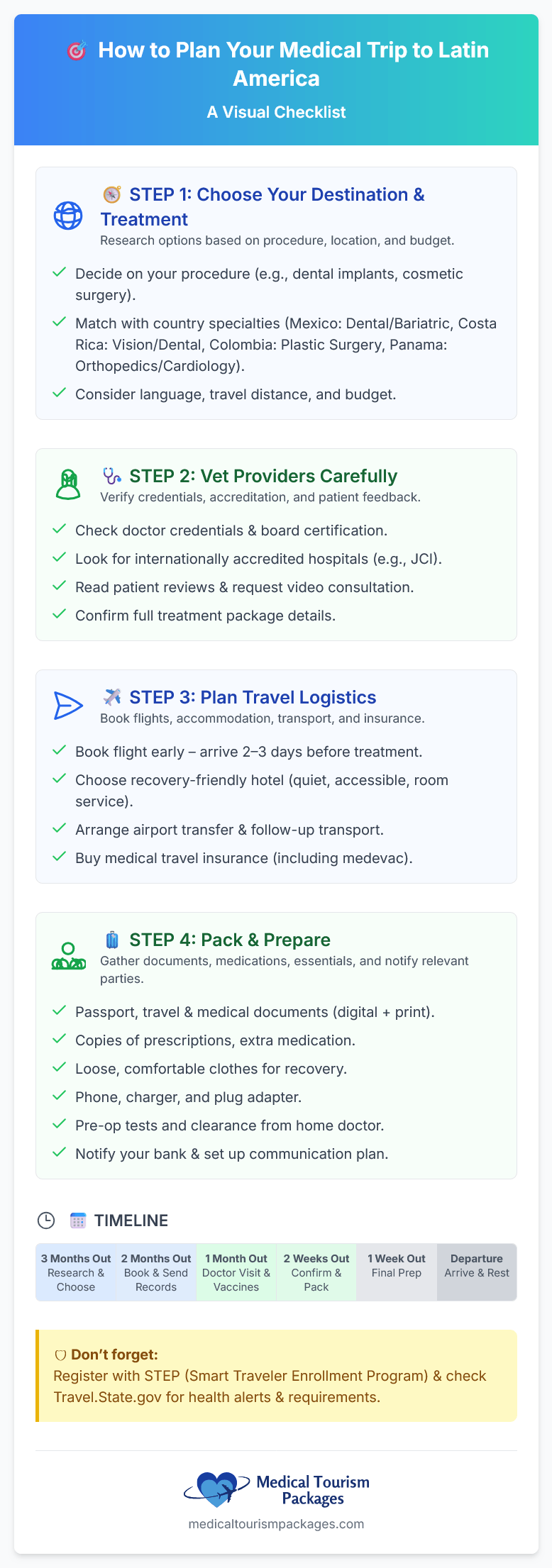
Essential Documentation
Having the correct documentation readily accessible is crucial. A checklist ensures nothing vital is forgotten:
- Passport: Must be valid for at least six months beyond your stay, with any necessary visas secured.
- Copies: Bring physical and digital copies of your passport photo page and visa.
- Travel Confirmations: Flight itineraries, accommodation booking confirmations.
- Contact Information: Full contact details for the clinic, primary doctor abroad, hotel, and emergency contacts back home.
- Travel Insurance: Policy documents clearly showing coverage details, including specifics related to medical treatment abroad and emergency evacuation.
- Medical Records: Comprehensive records relevant to your procedure, including letters from your home physician, recent test results (blood work, ECGs), imaging scans (X-rays, MRIs, CTs), and a list of current medical conditions. Translation into the local language may be necessary or helpful – confirm this with your provider.
- Medication List: A detailed list of all your current prescription and over-the-counter medications, including dosages, along with allergies. Prescriptions from your home doctor may also be useful.
Storing digital copies securely online (e.g., in cloud storage) provides a backup.
Packing for Comfort and Recovery
Packing for medical travel requires focusing on comfort and practicality during the recovery phase:
- Clothing: Loose-fitting, comfortable clothes that are easy to put on and take off (e.g., button-front shirts, elastic-waist pants, zip-front robes). Choose fabrics that are soft against the skin.
- Footwear: Comfortable, easy-to-wear shoes like slip-ons or supportive slippers.
- Medications: All necessary prescription medications in their original packaging, with copies of the prescriptions. Bring enough to cover the entire trip duration, plus extra in case of delays. Include any over-the-counter pain relievers or other remedies advised by either your home or foreign doctor.
- Basic First-Aid: Items like bandages, antiseptic wipes, and any specific post-operative supplies recommended by your surgeon (though many will be provided).
- Toiletries: Standard personal hygiene items. Consider travel-sized options for convenience.
- Comfort Items: Travel pillow (especially for the flight), eye mask, earplugs, books, tablet, headphones, or other forms of entertainment for downtime during recovery.
- Electronics: Phone, charger, travel adapter/voltage converter suitable for the destination country.
- Local Currency: A small amount of cash in the local currency for immediate small expenses upon arrival (e.g., tips, snacks).
Pre-Departure Health Preparations
Addressing health needs before traveling is vital:
- Consult Home Physician: Schedule a visit with your primary care doctor or relevant specialists at home well before the trip. Discuss the planned procedure, travel fitness, management of any pre-existing conditions during travel, and arrange for necessary pre-travel health checks.
- Vaccinations: Check recommended or required vaccinations for the destination country. Resources like the CDC website or national health advisories provide country-specific information. Ensure routine vaccinations are up-to-date. Checking official resources like travel site from the state department gives essential government advice on health precautions for international travel.
- Pre-Operative Instructions: Carefully review and understand all pre-operative instructions provided by your treating surgeon abroad. This may include dietary restrictions (fasting), stopping certain medications (like blood thinners) or supplements, and specific hygiene protocols. Clarify any doubts well in advance.
Financial and Communication Preparations
Smooth financial transactions and reliable communication are essential:
- Inform Banks: Notify banks and credit card companies of your travel dates and destinations to prevent cards from being blocked due to unusual activity.
- Payment Methods: Confirm the accepted methods of payment for the medical procedure and associated costs with the clinic beforehand (e.g., wire transfer, credit card, cash). Understand the payment schedule.
- Communication: Arrange for international calling/data plans with your home mobile provider or plan to purchase a local SIM card upon arrival for affordable local calls and data access. This ensures easy communication with the clinic, accommodation, and family back home.
- Emergency Contacts: Share detailed itinerary and contact information (clinic, hotel, flight numbers) with emergency contacts at home. Keep their contact information readily accessible.
Arranging Post-Treatment Follow-up
Continuity of care is a critical consideration that extends beyond the trip itself. Before traveling, patients should:
- Discuss Follow-up Schedule: Understand the expected follow-up plan with the foreign provider – how many visits are needed post-procedure, over what timeframe, and whether virtual follow-ups are possible after returning home.
- Coordinate with Home Doctor: Inform your primary care physician or relevant specialist at home about the procedure and the anticipated follow-up needs. Determine if they are willing and able to assist with post-operative care, such as suture removal or monitoring recovery progress, upon return. Having this arranged beforehand ensures a smoother transition back into the home healthcare system.
A visual planning checklist infographic can be an excellent tool to summarize these preparation steps, offering a quick reference as you finalize your arrangements.
FAQs About Planning a Medical Trip
Potential medical travelers often have similar questions during the planning phase. Here are answers to common ones:
How do I choose the right country and provider?
Choosing involves balancing several factors. Start by identifying countries known for excellence in the specific procedure you need. Research potential providers within those countries, focusing intensely on verifying their credentials (board certification, training, experience), checking facility accreditation (like JCI), reading diverse patient reviews critically, and conducting virtual consultations to assess expertise and communication style. Consider logistical factors like travel ease, language, and total estimated costs beyond just the procedure price. Prioritize safety and quality above all else.
What steps should I take before traveling?
Key pre-travel steps include consulting your primary care physician at home regarding fitness for travel and follow-up care, getting necessary vaccinations, meticulously gathering all required documents (passport, visa, medical records, insurance, travel confirmations), understanding and following pre-operative instructions from your foreign surgeon, packing appropriately for comfort and recovery, arranging finances (informing banks, confirming payment methods), setting up reliable communication methods, and confirming all appointments and logistical arrangements.
How far in advance should I book everything?
It’s best to begin the research and vetting process at least 3-6 months before you want to travel. Once you’ve confirmed a provider and treatment dates (typically 2-3 months out), book flights and recovery-friendly accommodation promptly, as options may be limited. Visa applications, if required, should be started as soon as you choose the destination, as processing times can vary significantly. Using a planning timeline can help manage these steps effectively.
What documents or records should I bring?
Essential documents include your valid passport (with visa if needed), copies of passport/visa, flight and accommodation confirmations, detailed travel insurance policy information (confirming medical coverage), comprehensive medical records relevant to your procedure (potentially translated), a list of current medications and allergies (with prescriptions if possible), and emergency contact information. Having both physical and secure digital copies is recommended.
What recovery help should I arrange?
Arrange recovery support by choosing accommodation designed for post-operative comfort and accessibility, ideally close to the clinic. Consider traveling with a companion for support, if feasible. Confirm the level of post-operative care provided by the clinic or hotel (e.g., nursing checks). Plan for low-stress local transportation. Crucially, coordinate potential follow-up needs with both your foreign surgeon and your primary care physician back home before you travel.
Can I enjoy local attractions before or after treatment?
It depends on the timing and type of procedure. Light sightseeing before a major procedure might be possible, but make sure you get enough rest leading up to the treatment day. After treatment, recovery must be the absolute priority. Activity levels will be dictated by the specific surgery and the surgeon’s explicit instructions. While gentle activities like short walks might be OK later in the recovery period (subject to doctor’s approval), strenuous tourism or activities that could risk infection or injury should be strictly avoided until you get full clearance. Factor realistic recovery time, not tourism, into the core planning of the trip.

